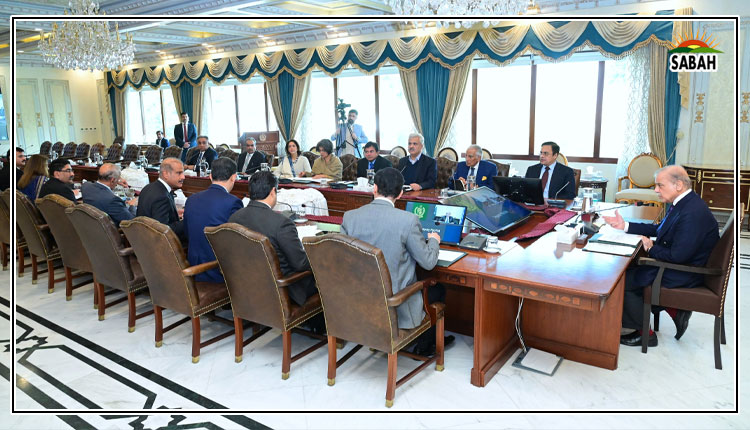Planning power…..Shaheera Tahir
Energy planning in Pakistan is mostly carried out on an ad-hoc basis as a reaction to an urgent crisis. This hasty and short-sighted approach has not only caused irreversible damage to our environment and local communities but also exposed our national exchequer to external energy supply chain shocks.
Lack of attention to address the structural causes of growing illiquidity in the energy sector has further hampered its financial position. As a result, what we see today is a rather dysfunctional energy sector compromised on both environmental and economic grounds. Our expensive energy mix, heavily reliant on imported fossil fuels, and lower contribution by cheaper renewable energy resources such as wind and solar bear testament to such shortcomings.
The energy sectors swelling circular debt crossing over Rs2.5 trillion highlights the magnitude of the prevalent inefficiencies. In such circumstances, a long-term system-oriented planning centred at sustainable energy resources such as solar and wind is direly needed. The adoption of a systems approach is particularly important to unleash the true potential of solar and wind energy resources to address issues of energy affordability, energy security and energy sustainability.
Solar and wind energy resources are inherently intermittent energy sources, and for this reason they are also known as variable renewable energy (VRE) resources. In Pakistan their potential has remained neglectfully unexplored, misled by the deep-rooted belief of power planning institutions that their variability would cause additional costs for the system.
A mere six per cent share of VRE in the current installed generation capacity, and over 150 pending wind and solar power projects worth more than 8 GW reflect institutional reluctance towards VRE. Their feasibility is objected by unduly burdening them with system costs of the energy sector.
The 2021 State of Industry Report, issued by the National Electric Power Regulatory Authority (Nepra), says, while analyzing the financial viability of renewable energy resources, the intermittency cost arising out of the need for keeping back-up generation capacity as well as the affiliated transmission and construction costs must be accounted for to induct the appropriate share of RE in the generation mix. It further states: the requirement of back-up arrangement for complementing the intermittent power generation capacity increases CPP [capacity purchase price] on account of non-utilization of available capacity of base-load thermal power plants.
It is important to understand our power system elements, their relevant characteristics and interconnections to ascertain the validity of such cost attributions towards VRE. The key components of our power system are: power producers, central power purchasing agency (CPPA-G), power distribution companies (DISCOs) and power consumers.
According to the Nepra report, if VRE share increases, the existing thermal power plants will be underutilized, resulting in increased capacity payments to the thermal fleet. However, the take or pay nature of power purchase agreements between thermal power producers and the central power purchasing agency (CPPA-G), necessitates capacity payments irrespective of their utilization.
Moreover, the clauses of minimum offtake guarantee baked into power purchase agreements, such as seen in recent coal-fired generators, translate into additional penalties. So, the portrayal that capacity payments to the existing thermal fleet will increase as a result of increased VRE share is misleading.
Analyzing the cost impact of the increased VRE share on a power system can be further ascertained through assessment of its flexibility. According to the International Energy Agency, the flexibility of a power system is defined by the extent to which a power system can modify electricity production or consumption in response to variability, expected or otherwise.
On the end of power production, in Pakistans energy mix, the thermal fleet is producing energy on a take or pay basis as baseload power plants. But in the presence of higher VRE, only the residual demand will need to be met by the thermal fleet.
So, the baseload nature of Pakistans thermal fleet requiring that it maintains full availability for dispatch of electricity unless the plant has to be put offline for maintenance adds inflexibility in the system. The resultant cost impact is thus more attributable to the nature of prevalent power system. A fair treatment thus demands categorization of such costs as system costs without disproportionately penalizing the VRE technologies.
VRE resources, on the other hand, are proving to be the cheapest generation options. Their cost is competitive with fossil fuel-based generation technologies, and they are abundantly available in Pakistan. An analysis of the existing solar and wind utility-scale power projects reveals that the lifetime cost of generating electricity from these resources is as low as Rs6-7/kWh. Whereas, for thermal fleet, the latest fuel cost component is as high as Rs35/kWh for furnace oil, Rs30/kWh for high-speed diesel, Rs22/kWh for regasified liquid natural gas (RLNG), Rs30/kWh for imported coal, and Rs16/kWh for domestic coal.
While the balancing and evacuation needs of the system may increase with more VRE share, the costs arising from under or non-utilization of conventional power plants would more suitably be a part of the overall system cost. The studies conducted in the European region on increasing renewable energy shares in the power systems reveal that the costs related to forecasting errors, grid upgrades or extension costs are usually negligible at lower VRE penetration levels, which will be true for Pakistan as well. Though the impact at higher levels remains to be seen, it will not be surprising to see renewables come out as the victor, especially given the prohibitively high prices of coal, oil and LNG.
A more holistic power planning approach needs to be adopted if Pakistan sincerely intends to amend its course towards sustainable and affordable means of power generation. Variable renewable energy presents a unique opportunity for much-needed system flexibility and long-term sustainability.
A total system cost approach can provide the necessary impetus to propel these technologies forward by giving system planners a true idea of the economic advantage they bring forth by reducing electricity prices, reducing the power sectors carbon footprint and providing energy security to the country.
Courtesy The News












